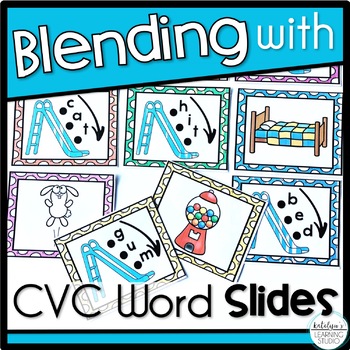5 Tips for Beginning Readers: The Best Ways to Grow Strong Reading Skills form the Start
Discover five practical reading tips for teaching beginning readers! These secrets help you start your beginning reading instruction in the most effective ways to prepare your kiddos to QUICKLY become excellent readers.
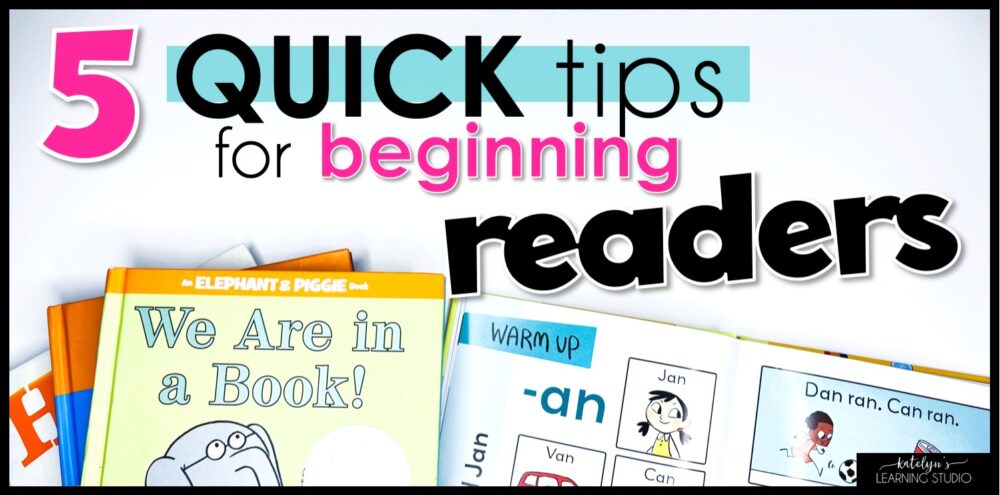
Here are 5 tips for teaching beginning readers.
Are you ready to help your beginning readers dive into the exciting world of reading?
Personally, I think that is the absolute best part of teaching reading.
Seeing that spark in new beginning readers as they learn to sound out those first words.
When they see a word on a package, in a book, or on a sign and realize for the first time– they can read it!
I love those beginning moments of thrill and excitement when they realize that they CAN read, and they get so excited to KEEP reading.
Beginning reading is a crucial time in their educational development.
- This is a crossroads where students either hop on the reading train, or miss it and start to get left behind.
- PREVENTION is always easier than INTERVENTION, and the gap gets bigger the longer we wait.
But, don’t let that intimidate you. When you have the right tools and knowledge, you can help your beginning readers from the start.
Starting by developing the right skills and using the most effective strategies will make a world of difference in laying their reading foundation.
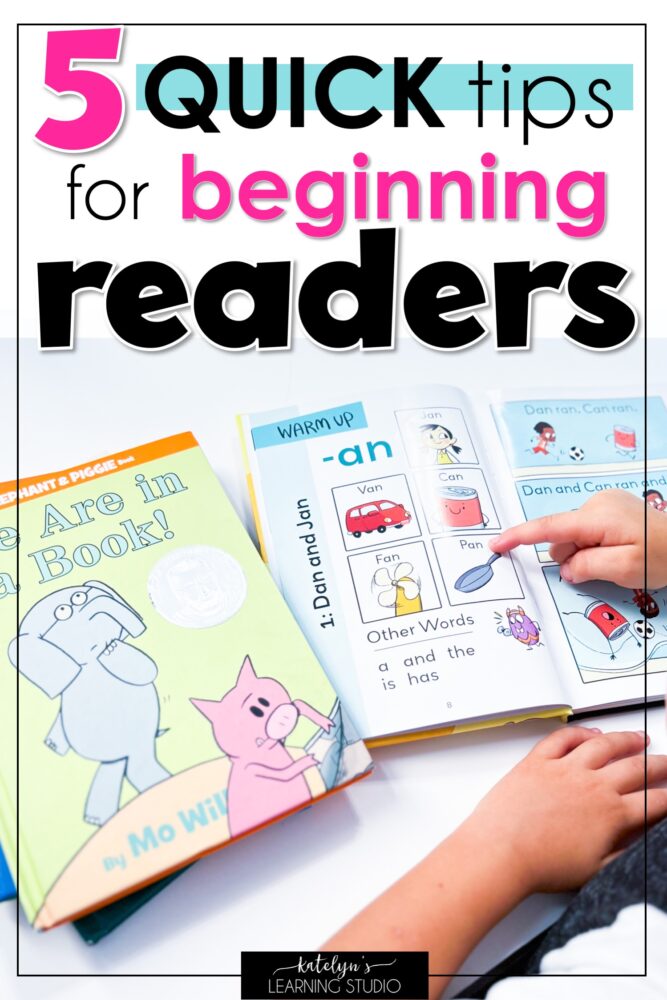
Beginning readers often need extra support when they first start reading.
So, get ready to make a difference in the lives of your beginning readers.
These 5 practical tips are your secret weapons to unlock their potential and instill a love for reading from the very start.

Reading tip: blend with ONLY sounds first (and no letters).
1. Teach Beginning Readers Phonemic Awareness (blending!)
Specifically, practice blending WITHOUT letters first!
Phonemic awareness skills are the FOUNDATION of reading.
If you work to build a solid phonemic awareness foundation, many students who would have struggled will actually progress right along with their typically developing peers!
It’s called PREVENTION (and it is so much easier than INTERVENTION).
(Here are 8 phonemic awareness strategies you can use to build those skills).
Within phonemic awareness, I want to talk about blending.
When we first start reading words, we say the sound of each letter out loud and then blend those sounds together to say the word.
It’s called sounding out words (or decoding, or blending written words).
Many people start at this step.
However…
…how do you expect beginning readers to be able to blend the sounds that they decode together if they have never practiced blending sounds at all?
Adding letters and decoding to the mix adds a whole nother difficulty level to an already difficult skill.
So first, practice blending sounds together to make words WITHOUT letters.
- Ex: say the sounds /m/ /a/ /t/ and have the student say “mat”
I use this phonological awareness binder to hit alllll of the phonemic awareness skills for a strong foundation.

When teaching beginning reading for kindergarten, continuous sounds are easier to blend first.
2. Have Beginning Readers Sound Out Words with Continuous Sounds First
There are two types of letter sounds:
- continuous sounds
- stop sounds
Continuous sounds are sounds that you can hold out (ex: /s/, /m/, /n/, /f/, /l/, /z/, /r/, /v/ + all the vowel sounds).
Stop sounds are sounds that are cut off when you say them (ex: /b/, /t/, /p/, /d/, /g/, /j/, /k/)
When you say stop sounds, you have to say them very separate and distinct from each other.
When you say continuous sounds one after another, you can hold them out so they sound more blended together.
Holding them out and “blurring” the sounds together is a lot easier for beginning readers to put the sounds together.
As they get better, you can separate the sounds more, but starting with continuous sounds is a good idea.
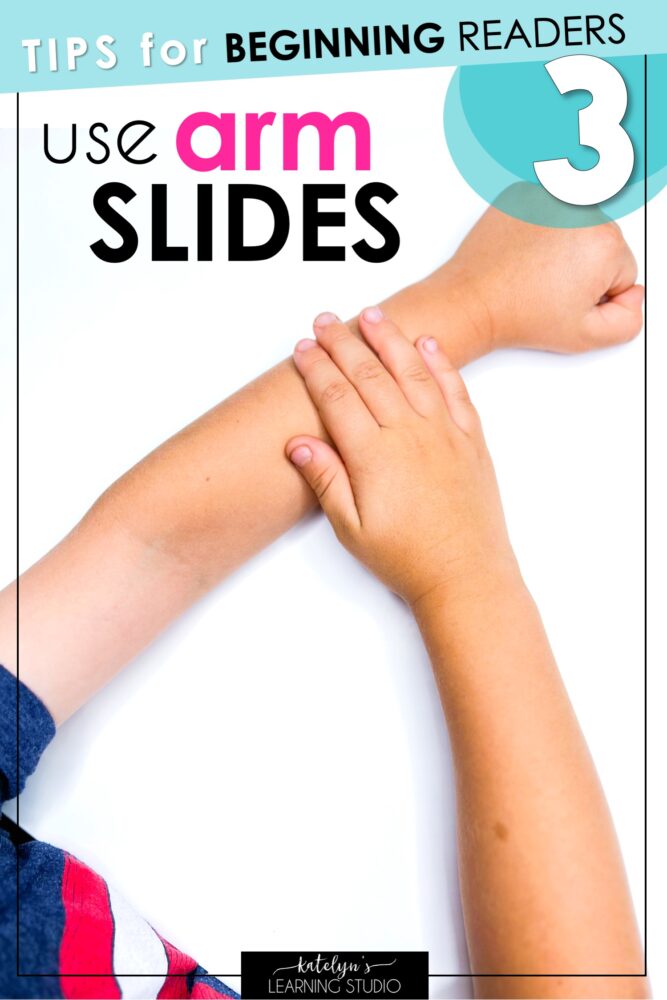
One of my favorite strategies in teaching reading is using arm slides.
3. Teach Beginning Readers to Use Arm Slides
This is a GREAT tactile tool for beginning readers to use when they are starting to blend words together as they read.
Tapping as you read provides multisensory input, and multisensory learning is one of the most effective strategies for struggling or beginning readers!
Here’s a video showing arm slides in action:
How to Use Arm Slides:
- Hold your arm out straight in front of you.
- For every letter, pat your arm (starting at the top and moving down) and say the sound it says.
- Then bring your hand back up to the top of your shoulder.
- Say the whole word as you slide your hand down your arm.
You can use arm slides as you read new words, or they pair perfectly with these fun CVC Word Slide Cards!
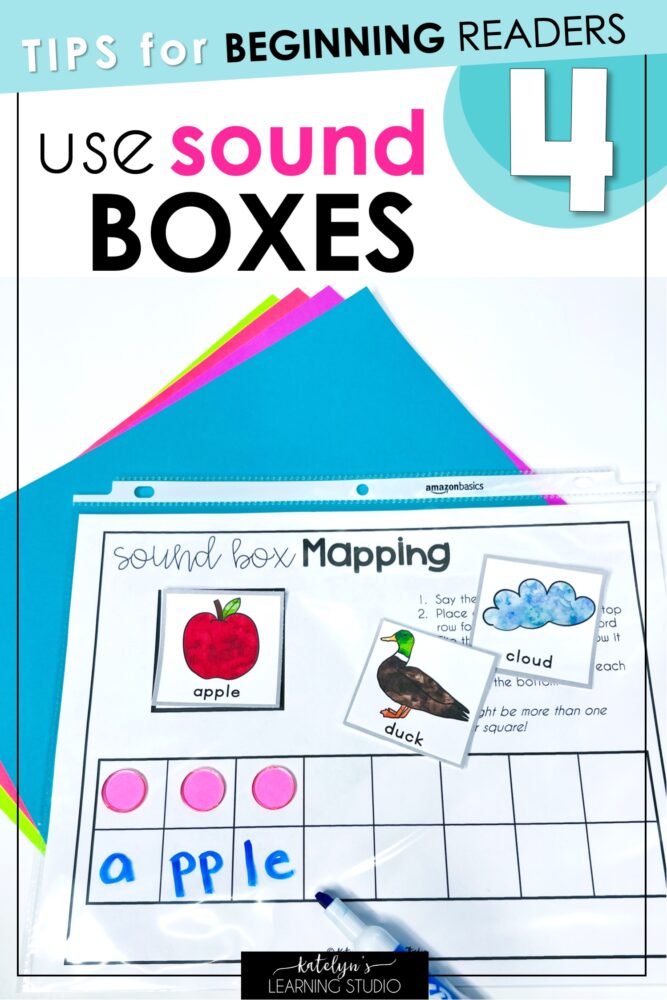
Sounds boxes are one of the best strategies for reading instruction aligned with the science of reading.
4. Use Sound Boxes to Promote Orthographic Mapping
Orthographic mapping is a CRUCIAL skill that will help your beginning readers turn new words into sight words. As students progress in phonemic awareness and phonics skills, orthographic mapping can sometimes naturally follow.
HOWEVER,
Explicitly practicing it using sound boxes, or word mapping, is a great way to super boost their reading skills!
The goal of this activity is to get students to connect the sounds they hear in the word with the letters that represent them.
Sound Box Mapping:
**Use a 2×10 grid in a page protector with a dry-erase marker
- Say a word.
- Say each sound out loud.
- Say each sound out loud again, but draw a dot in each box in the top row for each sound (each dot goes in a separate square).
- The teacher shows the word.
- The student writes the letter(s) that go with each sound in the box right below that sound dot.
- Then have the student read the word again.
Here is a great post with 11 Fun Word Mapping Activities to use with your kiddos!
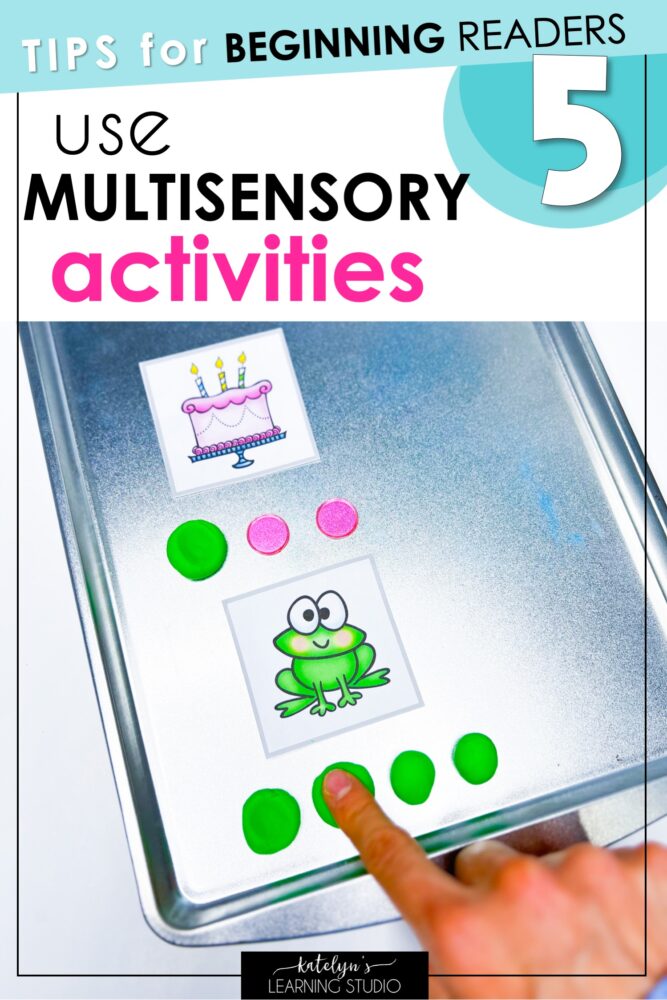
Beginning reading instruction is more engaging and effective with multi-sensory activities!
5. Beginning Readers Learn Best with Multisensory Activities
Research gives us an awesome hack into the quickest way to learn: multisensory learning!
Why is multisensory learning so effective?
- Studies have shown that students learn faster and retain knowledge significantly better when multiple senses are engaged at a time while learning.
- In fact, brain scanning shows us that more parts of the brain are activated with a greater number of senses stimulated.
- Plus, our beginning readers are still so new to the learning and “school” process. Multisensory activities are FUN and often feel more like playing. There are so many different ways to engage your kiddos’ senses in super engaging ways.
Check out this Ultimate List of Reading Intervention Activities that has TONS of activities organized by sensory learning type.
Also, I have a list of 6 Super Engaging Multisensory Learning Activities you can check out coming soon!
More Reading Help:
Hopefully, these reading tips give you a great start on helping your beginning readers.
If you are looking for more guidance in where to start your reading instruction and intervention, grab this FREE Reading Intervention Cheat Sheet that helps you figure out exactly what YOUR student needs!
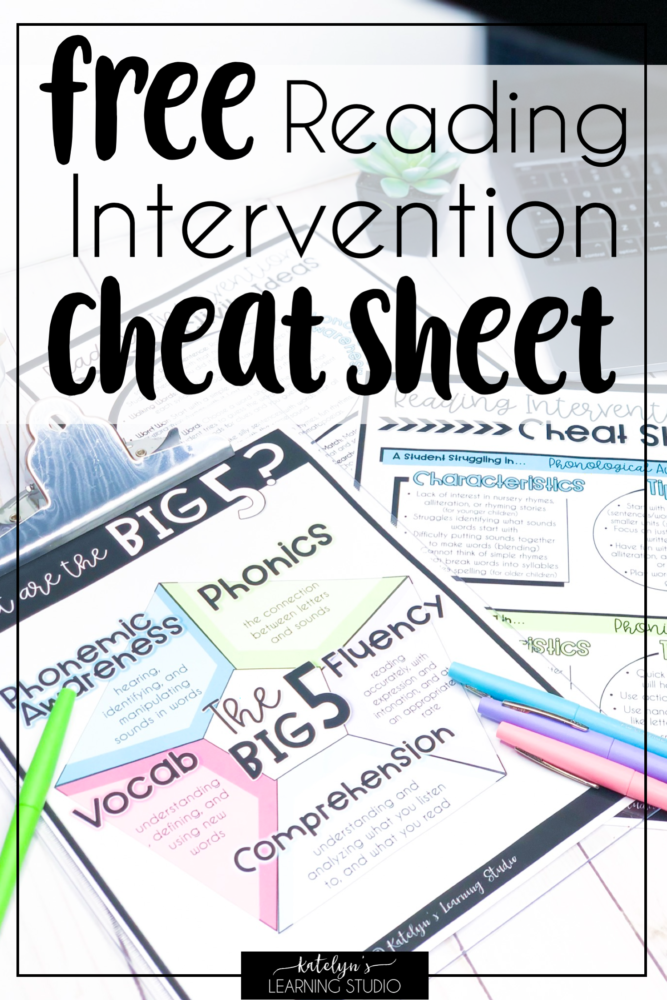
The strategies and ideas in this FREE Reading Intervention Cheat Sheet will help your struggling readers!
When teaching beginning readers, these reading tips will help you give them a strong foundation for the rest of their school years (& lives!). Prevention is the best way to address reading difficulties & build reading skills. When you start with the right strategies for reading instruction early on, you give students the best chances for success!
